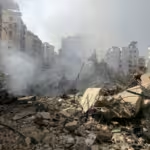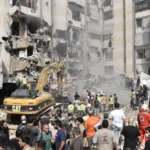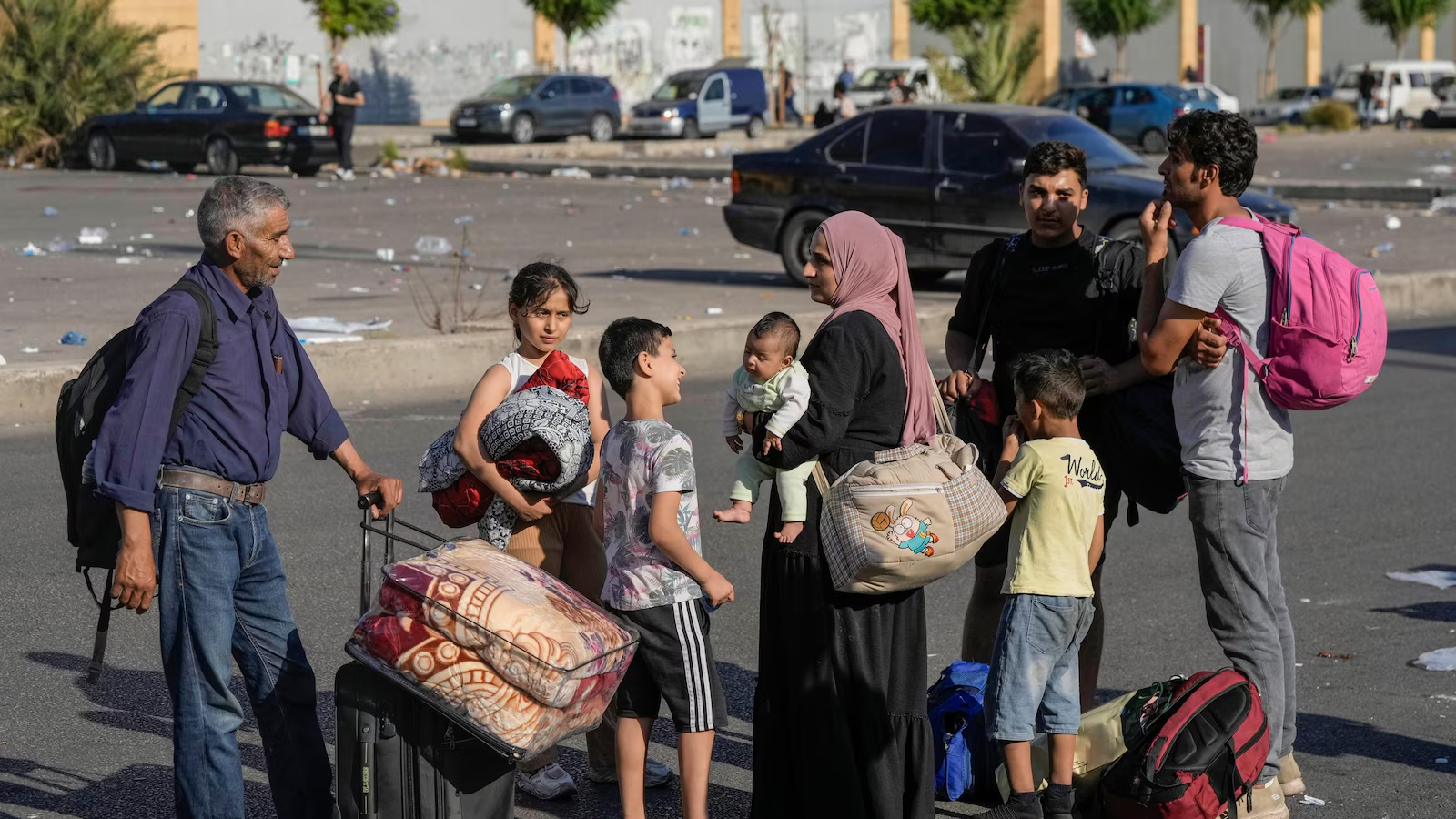BEIRUT: Smoke still curled up Saturday morning in the southern suburbs of Beirut, where Israeli airstrikes pounded the area last night, forcing thousands onto the streets. Overnight strikes caused chaos as hundreds of families scouted for shelter. Many ended up sleeping on public squares and beaches or in their cars. Schools transformed into makeshift shelters were overwhelmed, and many families stood stranded in the streets.
The scenes were similar to the devastation that was unleashed during the 2006 war between Israel and Hezbollah, wherein a huge portion of the suburbs of Beirut was left scorched.
The heavy bombardment was part of a week-long onslaught at Dahiyeh, which was very populated and one of the strongholds of Hezbollah. Included in the dead was the group’s leader, Hassan Nasrallah, who was reported to have died due to an airstrike on Friday.
And here’s Fatima Chahine, a Syrian refugee herself, who fled on a motorcycle with her husband and two children, along with hundreds of others, racing out of Dahiyeh as the bombardment rained on all sides. “Thank God, no one was wounded,” she said, reliving her harrowing escape. Chahine and her family ended up at Ramlet al-Bayda beach, sleeping by the hundreds of other refugees who had nowhere else to go.
Displaced Lebanese and Syrians who had taken refuge in Lebanon during the early Syrian civil war are caught in the crossfire. “I don’t think we can go back because it’s going to be a recipe for revenge by the Syrian government,” says Chahine, like so many other Syrians. “To all those who were involved with the opposition or took sides with it, there is an unbearable fate; they will spend the rest of their lives in prison,” explains the refugee. For these refugees, the current conflict in Lebanon is a cruel repetition of the past. “We fled the war in Syria in 2011 because of the children, and now the same thing is happening again,” Chahine lamented.
Meanwhile, the Lebanese government has opened schools to house those fleeing the strikes. However, space is scarce, and some Syrians report that they have been turned away, with priority given to Lebanese citizens. Talal Ahmad Jassaf, a Lebanese, said he spent the night on the beach with his family. “We spent more than three hours going in circles between schools and shelters, and we didn’t find one with room,” he said.
According to OCHA, the increase in fighting has doubled the number of internally displaced persons multiple times over, with more than 211,000 displaced so far. Of that, some 85,000 have sought shelter. However, humanitarian assets are being stretched to the breaking point. “Humanitarian capacities to respond have been severely overstretched,” the UN agency cautioned.
In the Manara neighborhood, the Nejmeh soccer club opened up its stadium to families displaced by the war, where it is providing water but no food or other supplies. Mariam Darwish said, who fled Dahiyeh earlier in the week with her husband and five children, that while the soccer club is helping, it is still true that “no aid organizations have arrived with blankets or food.”. As for the situation, it’s still desperate. “People are helping each other out. Family and friends are getting things for each other,” she said.
For many families, the uncertainty is overwhelming. Darwish, who fled Dahiyeh during the 2006 war only to return when it was over, hopes her home will still be standing. “We’re worried about our children and the schools, that they’ll lose out on their future,” she said. “What can we do? We can only say thank God.”















